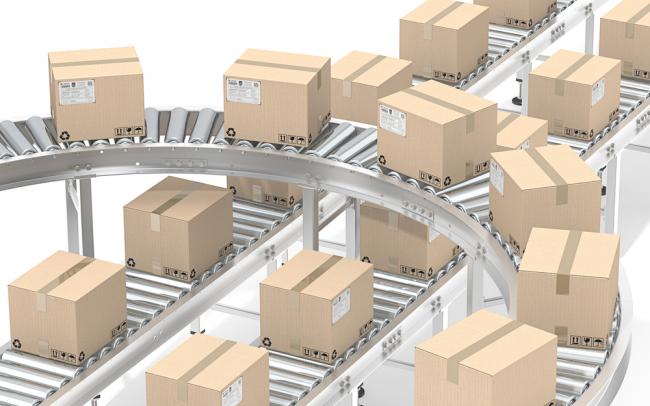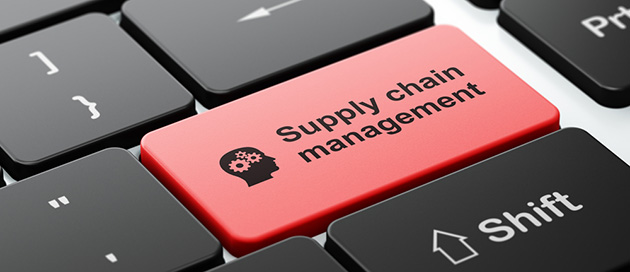Topics
How to use fully integrated EDI to meet omnichannel supply chain demands

Retailers and brands are undergoing a period of upheaval. Consumer demands and behavior have changed, in large part due to the rise of mobile, social, eCommerce and the emergence of fast fashion. Retailers are forced to innovate and optimize in order to keep up, and becoming truly omnichannel is a key strategy for retailers in today’s landscape. Why? Because it’s what customers are expecting, and retailers that can provide a unified shopping experience have a large advantage over the competition.
There are a lot of components to providing a strong omnichannel experience — for example, unified messaging, centralized customer information, superior customer service and streamlined purchase processes across all channels. One of the core elements of achieving omnichannel success is supply chain management. Consumers are expecting more. They want to shop on their own terms, and once they are ready to buy, retailers need to make the experience as easy as possible or they risk losing the sale. To accommodate the new demands, retailers need to support omnichannel workflows such as buy online and pick up in-store, or ship to home and return in-store. If a store is out of inventory on an item, a retailer should be able to access accurate inventory information across all stores, warehouses and other channels to fulfill the customer’s order.
-52% of retailers surveyed in a Forrester report cited inventory accuracy as a barrier against “pickup-in-store” programs
Consumers want these things to happen quickly and seamlessly; these capabilities are now key to building customer loyalty. On top of all this, thanks to the rise of fast fashion, consumers want the latest, on-trend merchandise available through all channels faster than ever before.
How the omnichannel challenge affects suppliers
Providing all of this presents a major challenge for many retailers. And to meet that challenge, retailers are putting more and more pressure on their suppliers — they’re seeking higher fulfillment rates, more timely shipment notifications, accurate product information and an overall increase in speed and visibility in terms of the merchandise you’re supplying to them, all often at a lower price point. As a supplier, you need the processes and systems in place to ensure that you’re meeting these retailer needs, otherwise you risk being dropped as a partner entirely.

The technologies to support suppliers in maintaining compliance continue to evolve as well. EDI (electronic data interchange) is not new, but it is a requirement for many suppliers if they want to do business with a large share of retailers.
There are a number of possible technologies that suppliers can deploy to ensure compliance with retailer needs. EDI remains one of the most widely used standards for automated business-to-business data exchange between retailers and their suppliers.
Fully integrated EDI's role in omnichannel strategy
EDI supports direct, automated exchange of data and documents between entities. EDI allows you to automate the exchange of documents such as purchase orders, advanced shipping notices (ASNs) and invoices. For years, many retailers, particularly large players, have required their supplier partners to operate EDI to do business with them. They do so, essentially, because EDI leads to streamlined operations — faster and more accurate, with less room for human error. When pressures are increasing for retailers to deliver on all the elements of an omnichannel experience for consumers, all this becomes even more important. In addition to enabling suppliers to do business with retailers, fully integrated EDI, delivers greater efficiencies for suppliers across their entire supply chain, providing full inventory visibility across all channels, streamlined processes and lower costs.
-Fully Integrated EDI extends beyond retail partners to help suppliers transact more effectively with manufacturers, payments providers, third-party logistics (3PL) partners, warehouses and other stakeholders.
As retailers increase pressure on supply partners to fulfill orders to a higher degree of accuracy and timeliness to meet consumers’ omnichannel demands, and suppliers aim to streamline and optimize their own supply chain, fully integrated EDI is more critical than ever to omnichannel success.
How has EDI established itself as an industry standard, one that’s critical to the success of partnerships between retailers and their suppliers, especially in an omnichannel environment? Retailers, especially large players that do business with a vast number of suppliers, continue to rely on EDI because it standardizes the transactions with their many partners – cutting down on miscommunication, human error, incorrect shipments and other mistakes that can cost them money and eat into already-thin profit margins.

Improving processes and data for wholesalers and retailers
For suppliers, EDI can improve the relationship with retailers – by ensuring the automatic flow of accurate data, it can help reduce chargebacks, improve supplier scorecard ratings and decrease the likelihood of compliance issues. When it comes to their own supply chain, many suppliers turn to fully integrated EDI for automating transactions for similar reasons. EDI is in widespread use by a number of partners including retailers, payment providers, warehouses, manufacturers, 3PL providers and shippers. By automating and standardizing those transactions via fully integrated EDI, suppliers can cut down on staffing and time spent handling logistics, reduce costly transaction errors due to faulty data and ultimately cut costs significantly.
In practice, how could this work? Let’s take the example of a supplier that creates a product line specific to a certain retailer, essentially a cut-to-order relationship.
- The retailer generates a purchase order that is sent electronically to the supplier.
- The supplier can then automatically create and send a production order directly to the factory that will produce the items.
- When products are packed and shipped from the factory, 3PL and retailers receive ASNs automatically.
- All of this means better data, faster processing, fewer errors and lower costs—which suits retailers aiming to meet omnichannel customer demands.
Transitioning to an omnichannel retail experience is not an easy task. It requires more accurate and visible data, and faster, more efficient processes. For suppliers that want to do business with top retailers (or sell directly to consumers and need to go omnichannel themselves), enabling that transition through effective systems and workflows is a top priority. Fully integrated EDI can help suppliers manage their entire supply chain more effectively, while creating better retailer relationships.

